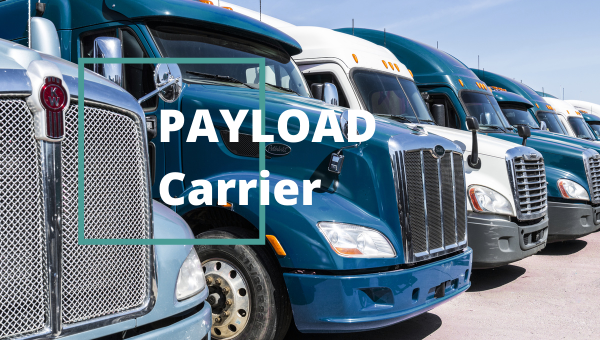
While the Oil and Gas industry is still in the nascent stages of its digital transformation, the transformation has been accelerated by a pandemic and a prolonged downturn resulting in significant consolidation and cost cutting by producers, and margin squeezing for carriers. Those companies who were able to effectively embrace technology to drive down internal costs are now coming out ahead. This is as true for carriers as it is for producers. Part of the move towards digital operations are Transportation Management Systems (TMS) that digitize and optimize a company’s transportation logistics. However, most TMS are targeted at producers who then require their carriers to use them. While there are some benefits that flow to carriers from a producer’s TMS, there are also gaps. Thus, a new kind of TMS – one crafted and brought to market specifically for carriers – was conceived by Payload Technologies. PL Carrier, a TMS specifically designed to help solve the business challenges of carriers has just launched.

Old industry, new challenges.
Carriers face several challenges unique to their position in the industry including high admin and stationery costs, manual field data capture processes, and declining margins for services rendered. Administrators need to manage what are still very manual processes and paper forms continue to be a significant bottom-line cost. Producers, armed with more robust data sets and analytics than carriers can typically access, are using tracking software and the data generated to drive down trucking costs. In addition, a carrier’s data capture and analytics process that is entirely manual can lead to substandard operational efficiency. While there are still significant headwinds to digitization, these are challenges which can be satisfied by software solutions. As many companies have experienced, there is significant effort involved with managing several disconnected systems, especially since most solutions solve a specific problem and are not effective outside of their niche. Adding to that multi-system fatigue is an almost institutional aversion to change in industry, which often manifests as a lack of willingness to embrace technology. These challenges remain strong for the time being, so carriers must look to streamlining their own operations while changing their internal narrative on technology to increase margins.
From present to future.
From a software provider’s perspective all the previously listed factors (and more) must be considered when developing solutions targeted at carriers. Basic functionality like creating work orders and assigning drivers, a mobile app for drivers to track work, and the ability to cost tickets and generate invoices digitally is just the first step to addressing these challenges and easing the transition of an industry’s move to digital operations. Additional features such as a built-in price book and fleet management, access to reporting and analytics within a few clicks, and integration to invoicing and other common internal systems are also important.
More important than where carrier TMS’s are now, is where they are going.
The future is paperless trucking. That is PAYLOAD’s tagline for the future vision of carrier TMS. Removing not only the paperwork burden on drivers but the paper costs to carrier companies by digitally generating bills of lading, TDG (Transportation of Dangerous Goods) documents, and safety paperwork, with minimal disruption to a driver’s routine. Also included is functionality like:
- Distributing field paperwork completely digitally, removing the need for paper and reducing human touch points,
- Digital sign-off to enable validation of work on site,
- A digital wallet to store driver-level and company-level certifications, safety information, and more,
- Scheduling,
- Integration with existing invoicing systems; and,
- Turn by turn route optimization.
All done in one system, one platform, that can replace the services of many systems and integrate with others to create an ecosystem of connected software. To get to this future, though, the first step is the digital field ticket.
Managing change.
With any digital solution there are individuals that accept technology immediately but there are also people who need to be won over. Historically, the Oil and Gas industry has been change-adverse, especially in the field where carriers conduct their operations. There are many people that choose to go into trucking because there is little technology involved. While concerns around the use and implementation of innovative technology still exist, it is becoming increasingly difficult to ignore the advantages offered by integrated software solutions.
The two most common concerns voiced about a paperless trucking vision are around meeting (and managing) the requirements of producers and regulators. Even in the almost post-COVID era there is a large contingent of producers that still require paper copies of field tickets to be left on site after pickup. Likewise on the regulatory side, paper is still required, though there has been some movement towards digital through initiatives like Transport Canada’s Paperless TDG Pilot. As digital transport management systems grow and adapt these issues will be alleviated, whether through regulator acceptance of digital documents or the ability for operators to digitally sign/approve tickets. The key is to align both producers’ and carriers’ interests to drive change forward. Once the time savings, cost savings, or simply the quality-of-life improvements technology brings are realized, common concerns and objectives will fall away. It all starts with a conversation to create a grassroots movement to embrace technology among field staff, both producer and carrier.
With the introduction of PAYLOAD’s PL Carrier to the carrier ecosystem we anticipate a groundswell towards technology adoption to simultaneously be more competitive and deliver better service to producers. Discover more about our company, PL Carrier, and the rest of our product suite at www.payload.com or contact us at [email protected]. Thanks for reading!
Share This:




 CDN NEWS |
CDN NEWS |  US NEWS
US NEWS 


























